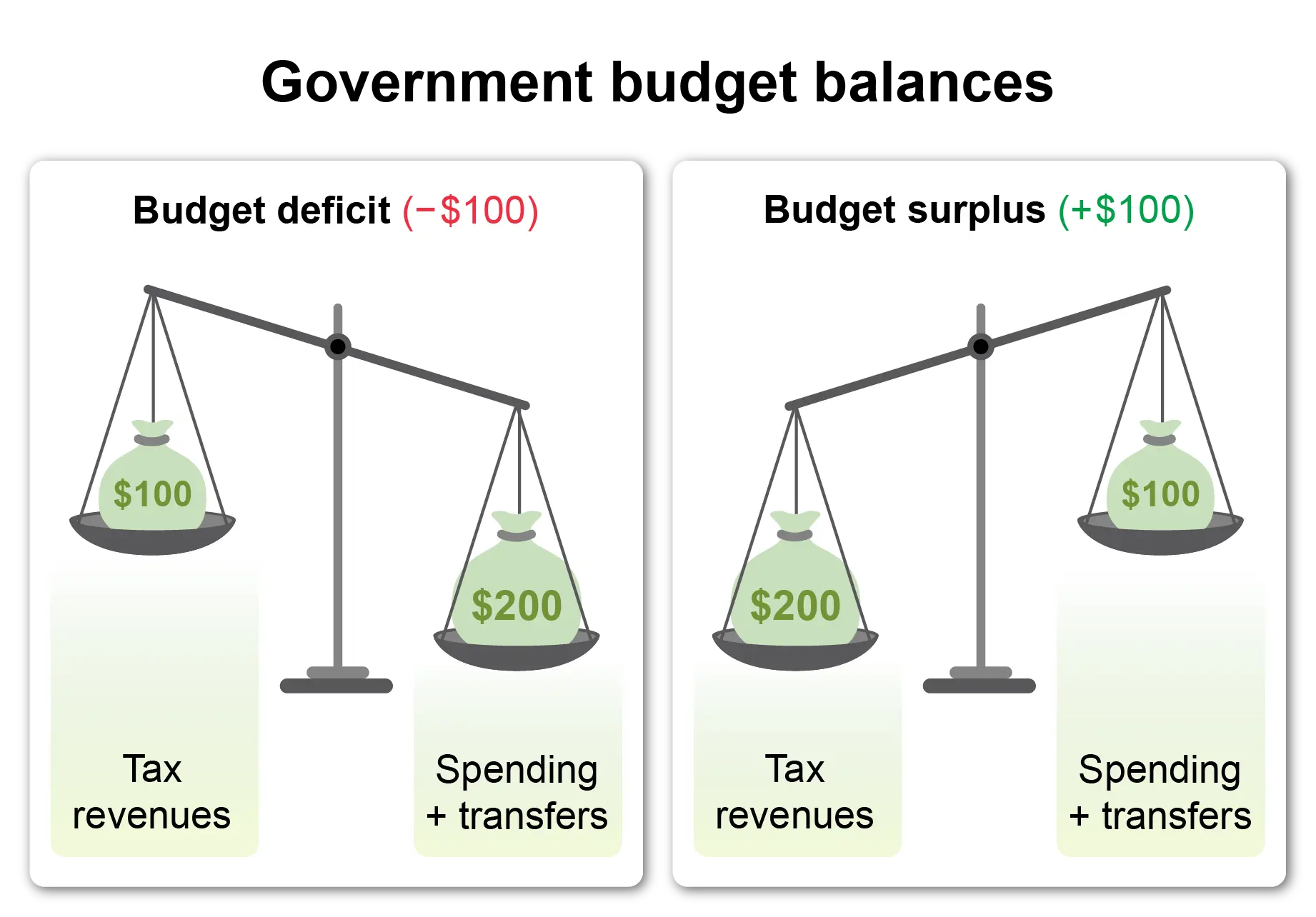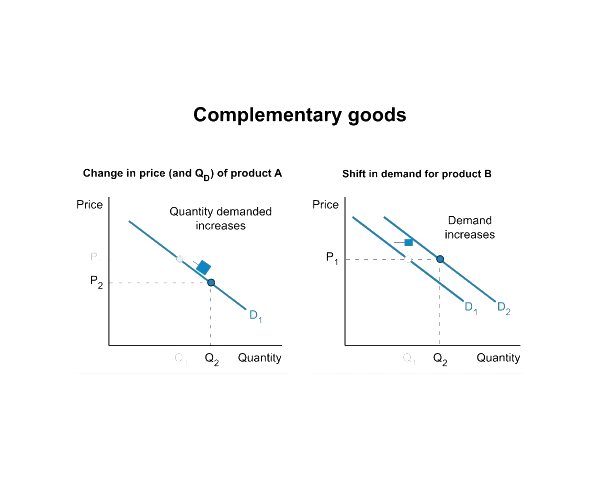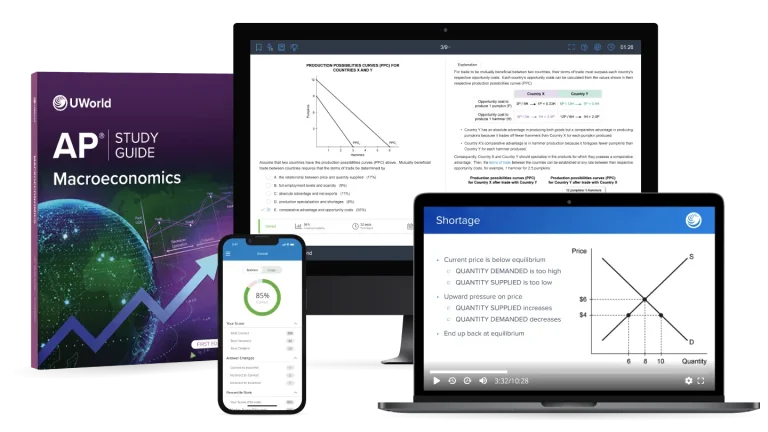Self-studying for your AP Macroeconomics course and exam showcases your initiative, self-discipline, and ability to learn independently. These qualities will help you stand out to colleges and universities during the admissions process.
While some students worry that self-studying lacks structure and accountability, it can actually be more effective than traditional classroom learning because:
- You Set the Pace: There’s no pressure to keep up with a class. Spend extra time on difficult topics and breeze through the easier ones.
- You Personalize Your Approach: Videos, practice questions, notes, and flashcards — use them however best suits your learning style.
- You Gain Independent Learning Skills: This skill will serve you well in college and beyond.
With the right tools and methodology, self-studying will help you explore AP subjects in-depth, think critically, and retain essential knowledge that will benefit you throughout your academic and professional life.

Follow this step-by-step guide using our proven Watch, Read, and Practice methodology to help you prepare effectively and confidently for the AP Macroeconomics exam.
Be Class-Ready
Step 1: Watch Videos Before Class
Start your study sessions by watching videos to get a basic understanding of the topics that will be covered in class. This will help you feel prepared and make the material easier to grasp when you encounter it live.
- Visually Engaging: Animations and graphics break down complex concepts, making them more digestible.
- Expert Instructors: Learn from experts who explain difficult topics like inflation and fiscal policy in a clear, relatable way.
- Flexible Learning: Pause, rewind, and rewatch videos to fully absorb the material at your own pace.
Step 2: Read and Take Notes
After watching the videos, read the related chapters to dive deeper into the material. If something doesn’t make sense, take notes and jot down questions about concepts you need to review.
- Personalized Notes: Use your digital notebook to keep track of key points and ideas.
- Create Questions: Write down unclear areas and come back to them after further review.
Step 3: Ask Questions During Class
When you’re in class, don’t hesitate to ask your teachers for clarification on anything you don’t understand. Engaging with your teacher in this way will help you solidify your knowledge.
Step 4: Dive Into Practice Questions
Now that you have a good grasp of the material use practice questions to test your understanding. This is essential for preparing for in-class quizzes and tests, reinforcing what you’ve learned, and identifying areas for further focus.
Test Prep Mode
Step 1: Use Videos for a Quick Overview
To begin your AP exam prep, use videos to refresh your memory on everything covered throughout the semester. This provides a comprehensive overview and helps you identify areas that need more attention.
- Visually Engaging: Videos help simplify difficult concepts like aggregate demand and supply, and international trade.
- Expert Instructors: Watch videos from experts who teach AP Macroeconomics with clarity.
- Flexible Learning: Replay videos to revisit challenging topics and fill knowledge gaps.
Step 2: Focus on Difficult Topics
Next, review any sections that you find difficult to understand. Reading more detailed explanations or revisiting videos can help clarify these concepts. Focus your efforts on these areas for a better understanding.
- Detailed Resources: Use your study guide and videos to dive deeper into challenging topics.
- Master the Basics First: Make sure you have a strong grasp of foundational concepts before moving to more advanced material.
Step 3: Practice with Exam-Level Questions
Once you've studied the material, practice with actual AP-level questions. These questions mirror the AP exam in difficulty and structure, helping you prepare for what you’ll encounter on test day.
- Exam-Level Complexity: Our practice questions replicate the format and rigor of the AP Macroeconomics exam.
- Detailed Answer Explanations: Every answer includes an explanation, helping you learn from correct and incorrect answers.
- Adaptive Learning: Track your progress and focus on areas where you’re weakest.
Step 4: Review with Flashcards and Notes
Use flashcards and notes to actively review and reinforce the concepts you’ve learned. Active recall is crucial for retaining information long-term and preparing for the exam.
- Digital Flashcards: Our spaced-repetition flashcards ensure you review at optimal intervals for maximum retention.
- Personalized Notes: Capture definitions, key points, and diagrams to reinforce your understanding.
Step 5: Stay Consistent
Consistency is vital when studying for the AP exam. Create a study plan and stick to it, using a digital planner to stay on track. If you fall behind, don’t worry — adjust your plan as needed.
- Personalized Study Schedule: Create a plan that fits your timeline, allocating enough time for every subject.
- Track Your Progress: Our study planner helps you monitor your performance and goals.
- Adaptability: Adjust your schedule if you miss a session or need more time on a particular topic.
Self-studying for your AP Macroeconomics exam is an opportunity to take control of your learning and develop valuable skills that will benefit you beyond high school. By following the "Watch, Read, and Practice" methodology and staying consistent with your study plan, you can maximize your chances of success on exam day. Remember, whether you're preparing for class or gearing up for the AP exam, the key is to engage with the material actively and regularly.
Stay disciplined and keep practicing, and soon, you'll be not only prepared but confident in your ability to ace the AP Macroeconomics exam!



